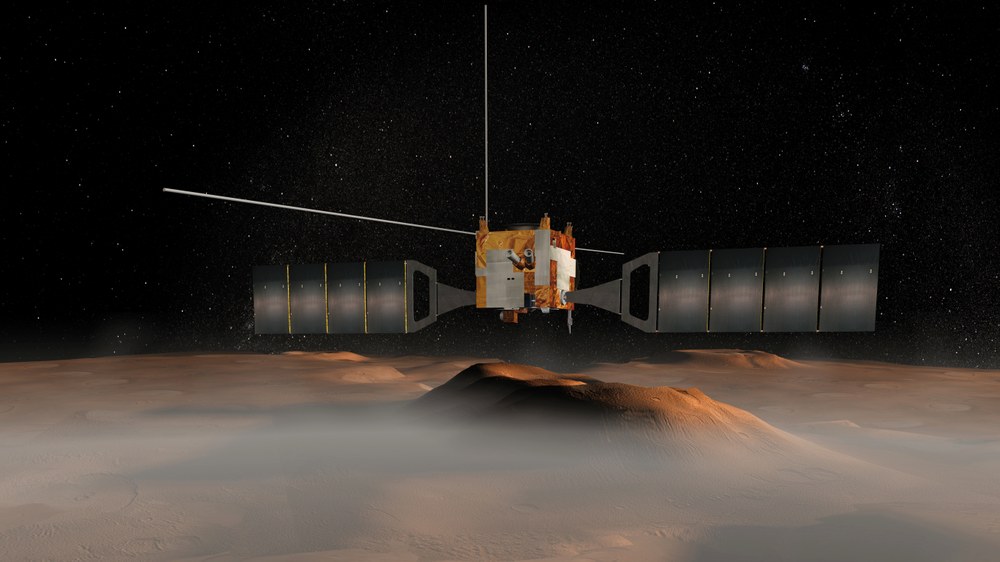Mars Express

Mars Express was the first ‘flexible’ mission of ESA’s long-term science exploration programme. The spacecraft was launched on 2 June 2003 and arrived on 25 December 2003 with successful orbit insertion. With its complement of seven experiments, Mars Express was designed to study all aspects of Mars, including its atmosphere and climate, and the mineralogy and geology of the surface and subsurface. Since the start of science operations in 2004, the durable orbiter has given scientists an entirely new view of Earth’s intriguing neighbour.
The High Resolution Stereo Camera (HRSC) is designed to simultaneously map the morphology, topography, structure and geological context of the surface of Mars as well as atmospheric phenomena. The HRSC directly addresses two of the main scientific goals of the Mars Express mission: (1) high-resolution three-dimensional photogeological surface exploration and the investigation of surface-atmosphere interactions over time; and (2) the study of atmospheric phenomena by multi-angle coverage and limb sounding as well as multispectral mapping by providing high-resolution three-dimensional colour context information. In addition, the stereoscopic imagery is a valuable tool in characterising landing sites and their geological context. The HRSC surface resolution and the digital terrain models bridge the gap in scales between highest ground resolution images (e.g., HiRISE) and global coverage observations (e.g., Viking). The high-resolution image data, in stereo and colour, form the basis for the global mapping of Mars and the creation of digital terrain models that reveal the planet’s topography. The high-altitude regional observations enable the monitoring of Martian atmospheric phenomena and variable features and form the basis of a comprehensive database of clouds, storms and other weather events on Mars. By January 2024, the camera had provided coverage of 85.6 percent of the Martian surface at high resolution (better than 20 metres per pixel) and 98.9 percent coverage at all resolutions. The HRSC science team consists of 50 co-investigators from 34 institutions and 11 countries. In addition, hundreds of scientists worldwide are working with the data from the experiment.
In 2023, Mars Express has been granted its 9th mission extension for the period to 2026 along with the possibility to apply for a 10th extension (2027-28).
Hardware Participation of the DLR Institute of Planetary Research
- HRSC (High Resolution Stereo Camera)
PI: Daniela Tirsch
Scientific Participation of the DLR Institute of Planetary Research
- HRSC (High Resolution Stereo Camera)
- PFS (Planetary Fourier Spectrometer)
- OMEGA (Observatoire pour la Minéralogie, l'Eau, les Glaces et l'Activité/Visible and Infrared Mineralogical Mapping Spectrometer)
